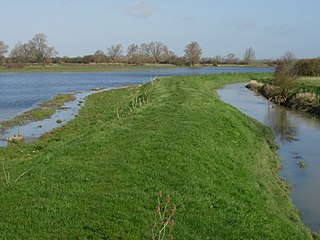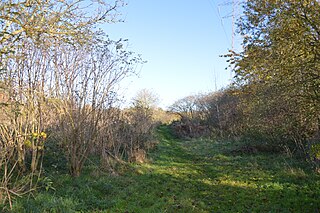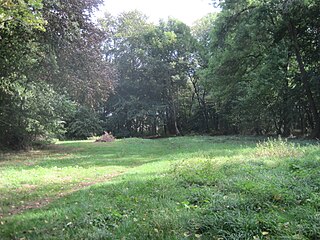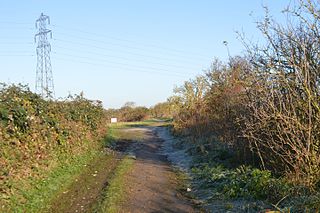| Somersham Local Nature Reserve | |
|---|---|
 | |
| Type | Local Nature Reserve |
| Location | Somersham, Cambridgeshire |
| OS grid | TL 366 781 |
| Area | 8.9 hectares |
| Managed by | Cambridgeshire County Council and Somersham Parish Council |
Somersham Local Nature Reserve is an 8.9 hectare Local Nature Reserve in Somersham in Cambridgeshire. It is owned and managed by Cambridgeshire County Council and Somersham Parish Council. [1] [2]

Somersham is a village and civil parish in Cambridgeshire, England. Somersham lies approximately 9 miles (14 km) east of Huntingdon and 4 miles (6 km) north of St Ives. Somersham is situated within Huntingdonshire which is a non-metropolitan district of Cambridgeshire as well as being a historic county of England.

Cambridgeshire is a county in the East of England, bordering Lincolnshire to the north, Norfolk to the north-east, Suffolk to the east, Essex and Hertfordshire to the south, and Bedfordshire and Northamptonshire to the west. The city of Cambridge is the county town. Modern Cambridgeshire was formed in 1974 as an amalgamation of the counties of Cambridgeshire and Isle of Ely and Huntingdon and Peterborough, the former covering the historic county of Cambridgeshire and the latter covering the historic county of Huntingdonshire and the Soke of Peterborough, historically part of Northamptonshire. It contains most of the region known as Silicon Fen.
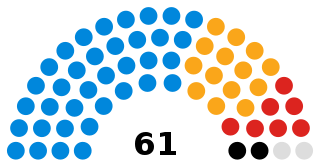
Cambridgeshire County Council is the county council of Cambridgeshire, England. The council consists of 61 councillors, representing 59 electoral divisions. The Conservative Party took control of the council at the 2017 election after four years of no party having overall control. The council meets at Shire Hall in Cambridge. It is a member of the East of England Local Government Association.
Habitats in this reserve are a lake, wetland, grassland and woodland. Invertebrates include grass snakes and common lizards, there are birds such as great crested grebes, and flora such as red bartsia and purple loosestrife. [1]

The grass snake, sometimes called the ringed snake or water snake, is a Eurasian non-venomous snake. It is often found near water and feeds almost exclusively on amphibians. The barred grass snake, Natrix helvetica, was split off as a separate species in 2017.

The great crested grebe is a member of the grebe family of water birds noted for its elaborate mating display. Its scientific name comes from Latin: the genus name Podiceps is from podicis, "vent" and pes, "foot", and is a reference to the placement of a grebe's legs towards the rear of its body; the species name, cristatus, means "crested".
There is access from Station Approach, named after the former Somersham railway station. The nature reserve includes a section of disused railway land, part of the March branch of the former Great Eastern Railway.
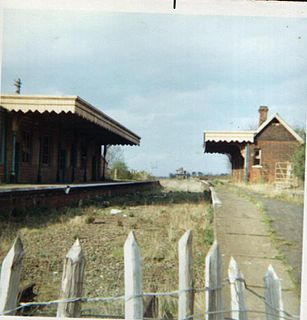
Somersham railway station was a station in Somersham, Cambridgeshire on the Great Eastern Railway between March and St Ives. There was also a branch line that ran north-west from the station to Ramsey. It opened in 1848, but was closed on 6 March 1967.

The Great Eastern Railway (GER) was a pre-grouping British railway company, whose main line linked London Liverpool Street to Norwich and which had other lines through East Anglia. The company was grouped into the London and North Eastern Railway in 1923.
| Wikimedia Commons has media related to Somersham Local Nature Reserve . |


